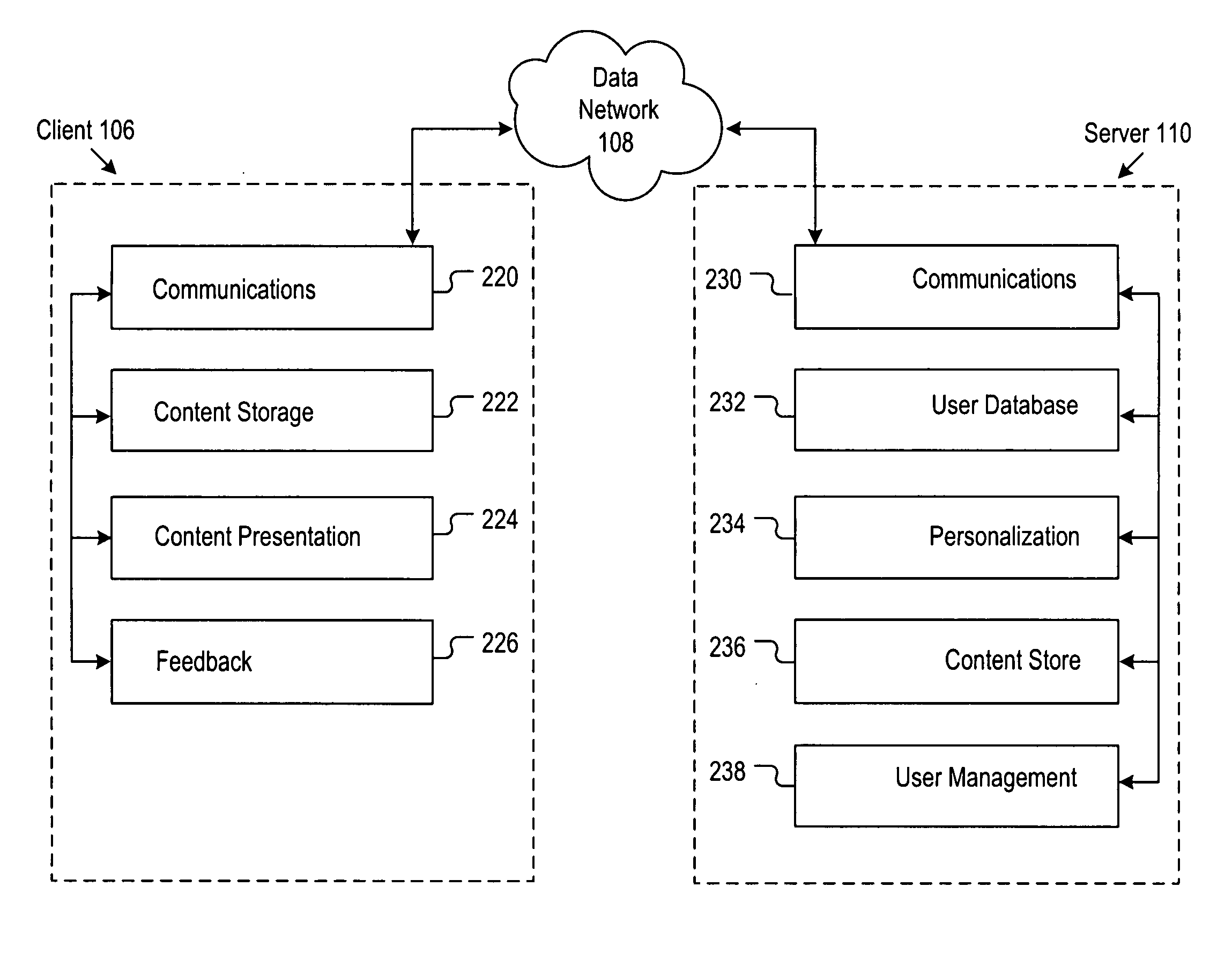Personalized content delivery
a content delivery and personalization technology, applied in the field of multimedia content delivery, can solve the problems of limiting the amount of content that can be viewed, affecting the user experience of such devices, and obtaining multimedia content in this way
- Summary
- Abstract
- Description
- Claims
- Application Information
AI Technical Summary
Benefits of technology
Problems solved by technology
Method used
Image
Examples
Embodiment Construction
[0039] The illustrative embodiment of the invention is a system in which a server pushes multimedia content to a client. The server receives feedback from the client concerning the content, with the intent of increasing the likelihood that subsequent selections of content by the server will be of interest at the client side.
[0040] The illustrative system is particularly adapted to require little in the way of explicit input from a user. That is, efficient use of the system requires nothing more on the part of the user than simply accessing the content that has been received from the server. In view of this minimalist approach, the system is very well suited for use in conjunction with devices that have relatively limited or otherwise compromised user-interface capabilities, such as wireless, hand-held devices.
[0041] In some embodiments, the system is used in conjunction with methods and apparatus disclosed in applicant's co-pending U.S. patent application Ser. No. ______, entitled...
PUM
 Login to View More
Login to View More Abstract
Description
Claims
Application Information
 Login to View More
Login to View More - R&D
- Intellectual Property
- Life Sciences
- Materials
- Tech Scout
- Unparalleled Data Quality
- Higher Quality Content
- 60% Fewer Hallucinations
Browse by: Latest US Patents, China's latest patents, Technical Efficacy Thesaurus, Application Domain, Technology Topic, Popular Technical Reports.
© 2025 PatSnap. All rights reserved.Legal|Privacy policy|Modern Slavery Act Transparency Statement|Sitemap|About US| Contact US: help@patsnap.com



